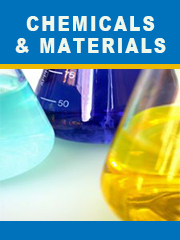Report overview
High-purity alumina ceramics are ceramic materials with an Al2O3 content of more than 99.9%. Because the sintering temperature is as high as 1650-1990?, the transmission wavelength is 1?6?m.
This report aims to provide a comprehensive presentation of the global market for High Purity Alumina Ceramics for Semiconductor, with both quantitative and qualitative analysis, to help readers develop business/growth strategies, assess the market competitive situation, analyze their position in the current marketplace, and make informed business decisions regarding High Purity Alumina Ceramics for Semiconductor. This report contains market size and forecasts of High Purity Alumina Ceramics for Semiconductor in global, including the following market information:
Global High Purity Alumina Ceramics for Semiconductor Market Revenue, 2018-2023, 2024-2030, ($ millions)
Global High Purity Alumina Ceramics for Semiconductor Market Sales, 2018-2023, 2024-2030, (MT)
Global top five High Purity Alumina Ceramics for Semiconductor companies in 2022 (%)
The global High Purity Alumina Ceramics for Semiconductor market was valued at US$ million in 2022 and is projected to reach US$ million by 2029, at a CAGR of % during the forecast period. The influence of COVID-19 and the Russia-Ukraine War were considered while estimating market sizes.
The U.S. Market is Estimated at $ Million in 2022, While China is Forecast to Reach $ Million.
0.999 Segment to Reach $ Million by 2029, with a % CAGR in next six years.
The global key manufacturers of High Purity Alumina Ceramics for Semiconductor include CoorsTek, Ferrotec, Morgan Advanced Materials, Kyocera, Superior Technical Ceramics (STC), CeramTec, Elan Technology, NIKKATO and Sumitomo Chemical, etc. in 2022, the global top five players have a share approximately % in terms of revenue.
MARKET MONITOR GLOBAL, INC (MMG) has surveyed the High Purity Alumina Ceramics for Semiconductor manufacturers, suppliers, distributors and industry experts on this industry, involving the sales, revenue, demand, price change, product type, recent development and plan, industry trends, drivers, challenges, obstacles, and potential risks.
Total Market by Segment:
Global High Purity Alumina Ceramics for Semiconductor Market, by Type, 2018-2023, 2024-2030 ($ Millions) & (MT)
Global High Purity Alumina Ceramics for Semiconductor Market Segment Percentages, by Type, 2022 (%)
0.999
0.9999
Others
Global High Purity Alumina Ceramics for Semiconductor Market, by Application, 2018-2023, 2024-2030 ($ Millions) & (MT)
Global High Purity Alumina Ceramics for Semiconductor Market Segment Percentages, by Application, 2022 (%)
CVD
PVD
Plasma Etching
Ion Implantation
Other
Global High Purity Alumina Ceramics for Semiconductor Market, By Region and Country, 2018-2023, 2024-2030 ($ Millions) & (MT)
Global High Purity Alumina Ceramics for Semiconductor Market Segment Percentages, By Region and Country, 2022 (%)
North America
US
Canada
Mexico
Europe
Germany
France
U.K.
Italy
Russia
Nordic Countries
Benelux
Rest of Europe
Asia
China
Japan
South Korea
Southeast Asia
India
Rest of Asia
South America
Brazil
Argentina
Rest of South America
Middle East & Africa
Turkey
Israel
Saudi Arabia
UAE
Rest of Middle East & Africa
Competitor Analysis
The report also provides analysis of leading market participants including:
Key companies High Purity Alumina Ceramics for Semiconductor revenues in global market, 2018-2023 (Estimated), ($ millions)
Key companies High Purity Alumina Ceramics for Semiconductor revenues share in global market, 2022 (%)
Key companies High Purity Alumina Ceramics for Semiconductor sales in global market, 2018-2023 (Estimated), (MT)
Key companies High Purity Alumina Ceramics for Semiconductor sales share in global market, 2022 (%)
Further, the report presents profiles of competitors in the market, key players include:
CoorsTek
Ferrotec
Morgan Advanced Materials
Kyocera
Superior Technical Ceramics (STC)
CeramTec
Elan Technology
NIKKATO
Sumitomo Chemical
Outline of Major Chapters:
Chapter 1: Introduces the definition of High Purity Alumina Ceramics for Semiconductor, market overview.
Chapter 2: Global High Purity Alumina Ceramics for Semiconductor market size in revenue and volume.
Chapter 3: Detailed analysis of High Purity Alumina Ceramics for Semiconductor manufacturers competitive landscape, price, sales and revenue market share, latest development plan, merger, and acquisition information, etc.
Chapter 4: Provides the analysis of various market segments by type, covering the market size and development potential of each market segment, to help readers find the blue ocean market in different market segments.
Chapter 5: Provides the analysis of various market segments by application, covering the market size and development potential of each market segment, to help readers find the blue ocean market in different downstream markets.
Chapter 6: Sales of High Purity Alumina Ceramics for Semiconductor in regional level and country level. It provides a quantitative analysis of the market size and development potential of each region and its main countries and introduces the market development, future development prospects, market space of each country in the world.
Chapter 7: Provides profiles of key players, introducing the basic situation of the main companies in the market in detail, including product sales, revenue, price, gross margin, product introduction, recent development, etc.
Chapter 8: Global High Purity Alumina Ceramics for Semiconductor capacity by region & country.
Chapter 9: Introduces the market dynamics, latest developments of the market, the driving factors and restrictive factors of the market, the challenges and risks faced by manufacturers in the industry, and the analysis of relevant policies in the industry.
Chapter 10: Analysis of industrial chain, including the upstream and downstream of the industry.
Chapter 11: The main points and conclusions of the report.
